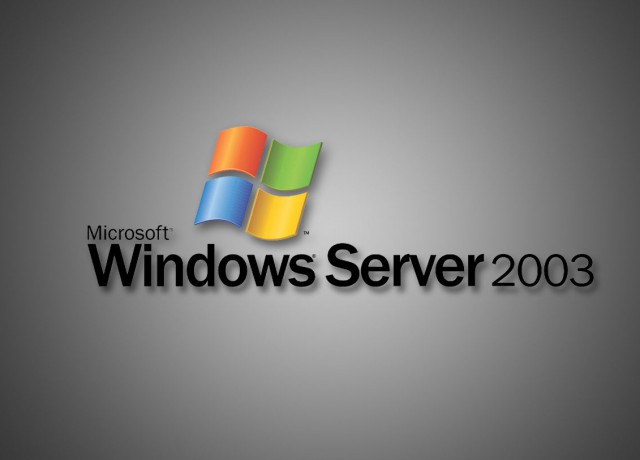Don't put your business at risk by continuing to use Windows Server 2003

One constant in the technology industry is that technology continues to evolve at a rate that many find it difficult to keep up with. Microsoft, for example, is currently busy promoting the launch of its latest desktop operating system (OS) -- Windows 10 -- that will be available from July 29 in 190 markets around the world. The company’s expectations are high, with it professing a goal of putting Windows 10 on a billion devices within two to three years.
As with its desktop OS, Microsoft’s Server solutions are also at a turning point, with countless businesses around the world facing up to the stark reality that as one server version comes into being; support for another one will drop by the wayside; now it’s the turn of Windows Server 2003. But managing any migration is not for the faint hearted.
The Ticking Time Bomb
With around 61 percent of businesses still running Windows Server 2003 as of March this year, there is a ticking time bomb facing businesses to address the security risks posed by the imminent end of support by Microsoft on July 14. Two of the main reasons why UK businesses have tended to bury their collective heads in the sand are the lack of funds for the substantial financial outlay required and a distinct lack of time and internal resources to migrate to Windows Server 2012 before the deadline.
It feels like we’ve been here before. Back in April 2014, Microsoft’s official support for the beloved Windows XP ended. Even the UK Government was unprepared and was forced to pay an additional £5.5 million for one year’s extended support for computers that hadn’t been updated by the deadline.
It’s not a problem confined to Whitehall. At the start of this year, NetMarketShare research highlighted that almost a quarter of PCs today still run Windows XP, down only slightly from last December’s figure of around 29 percent, suggesting that many organizations haven’t yet made the leap away from this unsupported OS.
The Writing’s on the Wall
Back to the present, where Microsoft will no longer issue security updates for any version of Windows Server 2003 after July 14. This is following mainstream support being switched off back in July 2010, so the writing’s been on the wall a long time. But whilst businesses should have already started, if not finished, their migration to a supported version of Windows Server, a worrying percentage have not. In fact, approximately one in three enterprises are planning to run Windows Server 2003 after the deadline, so it’s imperative for businesses to look at alternative solutions to prevent data loss as a matter of urgency.
We are all aware that failure to patch potential security holes in your system is a serious risk and not just from the potential ICO fines. Vulnerability and patch management isn’t easy. In fact, in today’s computing environment, it’s a never-ending cycle and the task is made far more difficult when the patches aren’t being pushed to your user’s desktops. Therefore, businesses need to now seriously consider whether to either make the move to a new version of Windows Server on-premise or to move to the cloud.
However, a simple migration to the latest version of Windows Server might not be easy. Businesses increasingly build their own bespoke applications to meet their specific business requirements. This DIY approach can save them license fees and ensure they have something that will fulfill whatever unique business pain they are trying to solve, however these applications are often just designed to work on whichever server platform they were originally designed for. Therefore migrating to Windows Server 2012 -- whether on-premise or in the cloud -- can open up a plethora of compatibility and integration issues.
So what can you do if this is the case or you have simply left it too late? What if the deadline is looming yet you don’t have the internal resources, or indeed the funds, to facilitate such a large migration of your organization’s systems?
Another Way
With the security issues faced by many businesses following the end of support for Windows XP still fresh in the mind, there is strong demand for an alternative solution to full migration. In particular, an interim solution that allows companies to maintain security and business continuity whilst planning resources needed for full migration.
By using a combination of cloud management and migration technologies, businesses can migrate a physical or virtual server machine quickly and simply into the cloud. More importantly, firewalls tailored to address the vulnerabilities of Windows Server 2003 can then be added around these servers to immediately protect them from threats, whilst still allowing businesses to access their critical data. This enables businesses to address the challenge of application migration without putting vital business information in danger and migrate Windows Server 2003 to the cloud with the security required to continue without support until full migration to Windows Server 2012 is completed.
The end of support for Windows Server 2003 is an issue a substantial number of businesses are facing and one that needs to be addressed with immediacy. According to Microsoft, there are 11 million Windows Server 2003 servers still running. If your business has not taken action yet, it’s likely your critical data may be at risk. Migrating can be daunting but it is imperative to find a solution which will protect your information and buy some more time before investing in a full move to Windows Server 2012.
Ian Finlay is chief operating officer at Abiquo.
Published under license from ITProPortal.com, a Net Communities Ltd Publication. All rights reserved.
